Last Chance to Catch NYC's Holiday Notalgia Train
We met the voices of the NYC subway on our nostalgia ride this weekend!


He’s not the hero New Orleans asked for, but if you ask any of his followers (on Instagram or in the streets), he’s one New Orleans deserves. “From the depths of the mighty Mississippi comes Sewage and Water Boy!,” reads the Instagram bio of New Orleans’ most unlikely hero. In the fight against street flooding, this man is taking the state of New Orleans’ infrastructure into his own hands, with his own shovel.
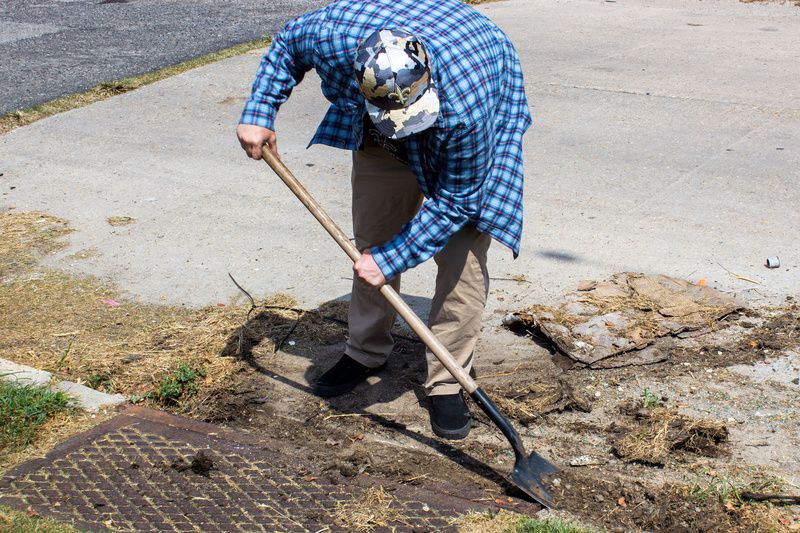
Since launching his alter ego on Instagram last summer, Michael Gibbs has unclogged over 250 storm drains (people have recently informed him that they’re actually called “catch basins,” but it’s all the same to the sharp end of his shovel.) These catch basins connect to a system of drains that manage the city’s stormwater.
His account, @sewageandwaterboy, features deeply satisfying before and after photos of his unclogging victories, as well as memes poking fun at the city’s notoriously dysfunctional Sewerage and Water Board. Without revealing his face, he’s garnered hundreds of followers.
The true tally of his work is unknown even to Gibbs, who was tackling stubborn drains for years before he began documenting it on Instagram.
“There’s something about taking a neglected place, and just giving it love and attention. And you’d be amazed at what I’ve seen in New Orleans when I open up a drain,” Gibbs said. “It makes a difference, whole streets will cease flooding.”
Gibbs is a notoriously humble character (“extraordinarily sincere” as his longtime friend and bartender Victoria Pisarello puts it), though his recent rise to Instagram fame reveals a star in the making.
“I shouldn’t feel bad,” he says as we finally kick off our interview, delayed by life talks and jokes about the infrastructure of the city we both love so much. “This is how it is in the entertainment business.”
Sewage and Water Boy is an expression of love, humor, and frustration channeled into one mission-oriented alter ego.
“I really was happy to use an anonymous fake name on social media,” Gibbs says. “And be somebody mysterious who people didn’t know who or where the message was coming from, but they knew it was coming from a local person from New Orleans who wanted to fight street flooding.”
Gibbs is intimately familiar with the streets he now works to maintain. He grew up skateboarding, obsessed with street art and skate culture. When we first met, he took me straight to a skate park, where he practiced his tricks while I practiced my photojournalism skills and learned about the life of the man behind the shovel.
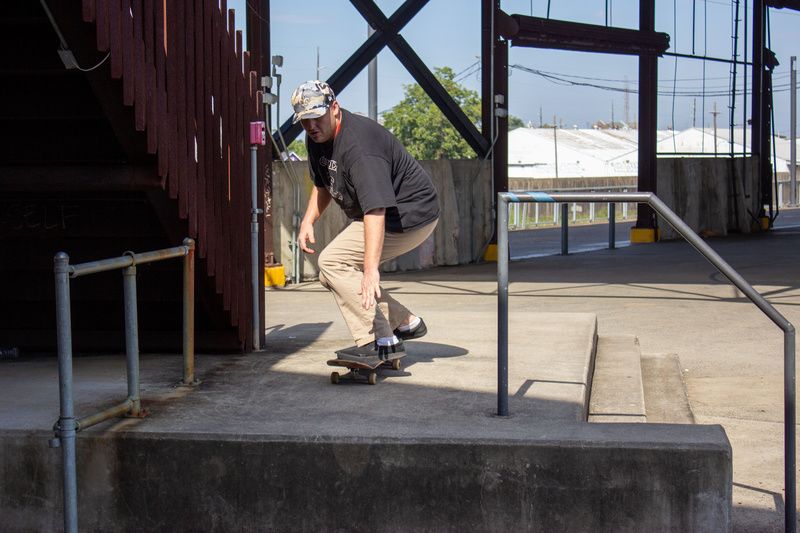
“For me, it’s like a game that never ends,” Gibbs says. “It just went from skateboarding to taking care of the streets, because I love them so much.”
As Sewage and Water Boy gained momentum, Gibbs grew more aware of the local network of established activists, advocates, and community leaders who work to move the needle in New Orleans every single day.
One of those leaders is Sage Michael Pellet, a community organizer renowned for his restoration of Lincoln Beach and his years of leadership in the climate justice space. He spearheads New Orleans’ emerging “culture of cleanliness” movement, which aims to improve the quality of life in New Orleans through cleaner public spaces and community action.
“We have too much -isms in our community,” Pellet says. “And beautification gets rid of those -isms, those racisms, those classisms, those ageisms, all those -isms that separate us with a common act of kindness and care for our community.”
On a walk home from a Saints game last fall, Gibbs noticed a mountain of hypodermic needles and debris beneath I-10. He reached out to Pellet through Instagram. By that Friday, they were filming a video of Pellet drawing attention to the issue and calling on residents to be part of the solution.
“Let them know, hey, this is something that’s ridiculous. We need to do something about it and we can do something about it today,” Pellet says. “Something simple, something lightweight, that we all can do: clean up, beautify. And social media, Instagram, and Facebook has been a tool for that initial outreach.”
More than 60 people, connected through a group Instagram message, showed up to completely transform the underpass. The event made the local news, and prompted a city council member to supply dump trucks and an excavator, opening Gibb’s eyes to the power of community organizing, and its potential through social media.
Gibbs’ presence in the New Orleans environmental activism scene has grown immensely since we first met in November of 2022. Since working with Pellet, Gibbs has now partnered with local organizations like Common Ground Relief, Green Light New Orleans, and I See Change, organizations that tackle everything from wetland preservation to sustainable household water usage.
Gibbs’ passion for his city is palpable – but it’s his love for his friends that truly lights him up and brings the man behind the shovel to near-tears.
“Now that I’ve been doing it [Sewage and Water Boy], I am so glad I did it because I’ve met so many amazing people and I’ve made so many friends and really had such amazing friendships just happen because of this all at once.”
In our current era, it’s surprising Gibbs didn’t take his activities to social media sooner. He says he wasn’t in the market for likes or other forms of recognition and wasn’t sure how people would react.
“I didn’t want to flop out there,” he recalls.
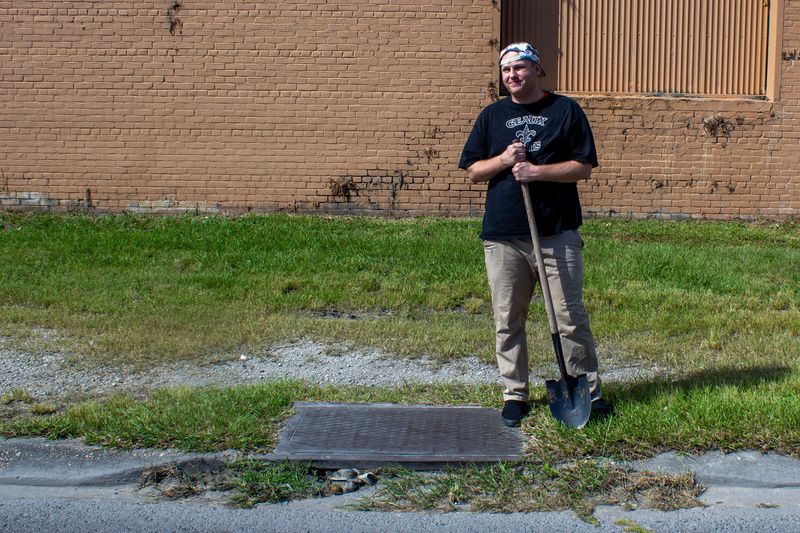
It took the encouragement of two loyal friends to convince Gibbs that his before and after photos deserved a space on people’s feeds, and needed an iconic name to match the spirit of the project.
“What’s the worst that can happen?” Pisarello remembers telling him. “Except he did it and everything that I would have ever hoped for him, it was happening for him.”
The name Sewage and Water Boy, coined by Gibb’s friend Kat Barnes, came after a series of brainstorming sessions between the three friends, an upgrade from earlier iterations like “Shovel Boy.” The hero’s logo looks like that of New Orleans’ Sewage and Water Board, with a slight spelling change.
“I think he’s trying to spark that creativity and drive to take care of where we live,” Pisarello said outside of the Felipe’s where her friendship with Gibbs began. “And if we don’t have the people above us looking out for us the way we need, we have to come from within and do it ourselves.”
“It just dawned on me right now during this interview that I wasn’t making friends,” Gibbs reflects, referring to the period of time when he began unclogging drains regularly. To explain, he takes me back to 2005.
Gibbs was 16 when Hurricane Katrina struck. When he returned to rebuild with his family, mainstream support for New Orleans and the surrounding area had already swelled, plateaued, and fizzled out almost entirely, it seemed. It was devastating to watch the rest of the country move on from a tragedy that those affected had barely begun to process, but would change their lives and their home forever.
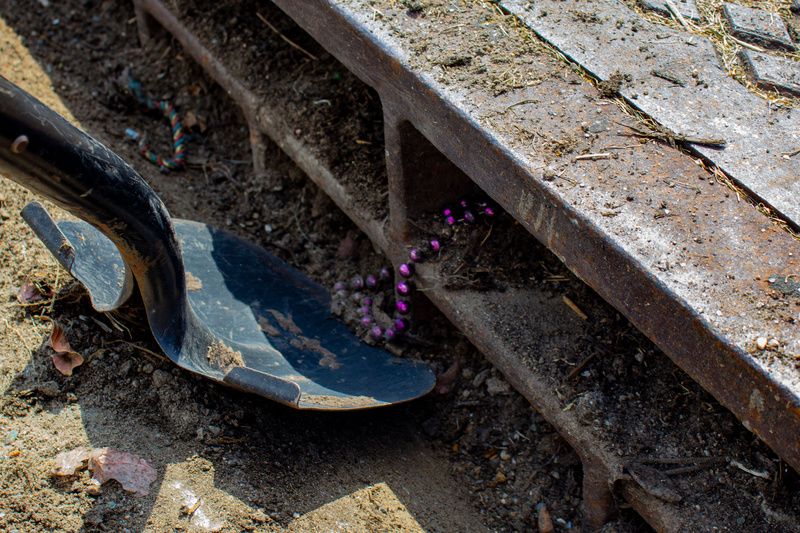
“I felt let down by the federal government back then,” Gibbs said. “And I felt like an underdog down here in Louisiana. And sometimes, maybe like a bother, or like the rest of the country maybe has a negative stereotype about New Orleans.”
The aftermath of Hurricane Katrina left Gibbs with a sense of loneliness and isolation that continued to permeate throughout his adult years. Many who survived the storm, including several of his friends, died from overdoses.
“And maybe that took me eventually to being outside Wendy’s on Carrollton late at night by myself,” Gibbs said, reflecting on one of the first drains he ever unclogged that made him want to unclog as many as possible.
“It was like a Pokemon game,” he said, “Gotta catch ‘em all.”
It was around 2016. Just Gibbs, his dog, and his shovel. One o’clock in the morning. Driving around looking to do something productive, something that felt good.
Looking back on days he describes as very personal and “very much alone,” Gibbs’ love for his current friends and fans, both old and new, is overwhelming.
“Because it really wasn’t about me,” Gibbs says. “This was about Louisiana. And more specifically, New Orleans. And it’s not just me, it’s been all you guys that I’ve met using a fake screen name.”
Gibbs looks forward to continuing to tackle the catch basins of New Orleans, fueled by the sincere belief that the people who live there deserve better. Part of this mentality is generational, as his mom was a teacher of Deaf students and an accessibility advocate.
“They just are such awesome, rare, special people,” Michael says of his parents. His father’s experience as a Deaf person inspired Michael’s decision to enroll in ASL interpreter courses, which he recently completed.
Now that school’s out for Michael, there’s no limit to what he hopes to accomplish.
“When I’m out of school, I’ll probably have New Orleans done in like, a week. Because I can’t sit still,” Gibbs said.
If he had a grant, Gibbs would expand his model to include a pothole team, public art opportunities for community muralists, street light repairs, and larger-scale debris clean-ups at blighted properties.
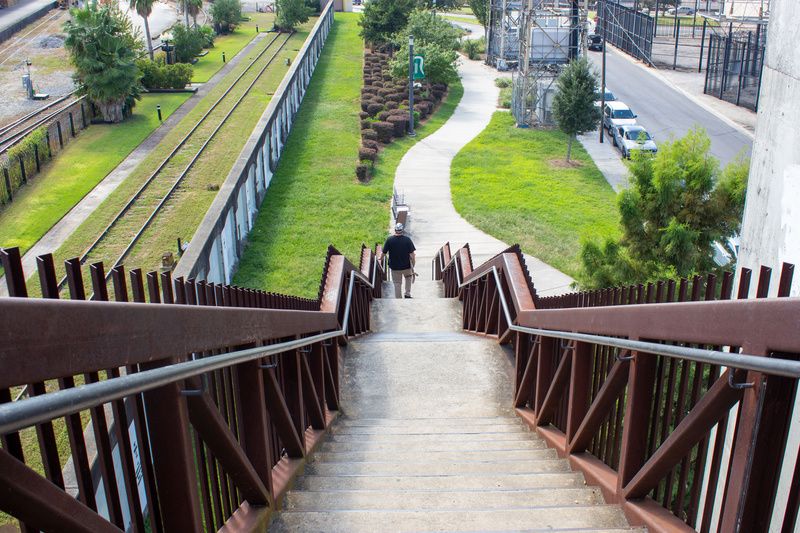
A self-identified “starving artist,” Gibbs says he’ll always pick up the shovel, regardless of whether or not he can secure the grants he needs to expand his operation.
“I’m gonna do it, if y’all pay me or if y’all don’t pay me,” Gibbs declares. “But if y’all did support me, I would really, really, really put everything I have into it.”
Next, check out The Failed NY Sewer Strike of 1971 and Could There Be Alligators in the NYC Sewers?
Subscribe to our newsletter